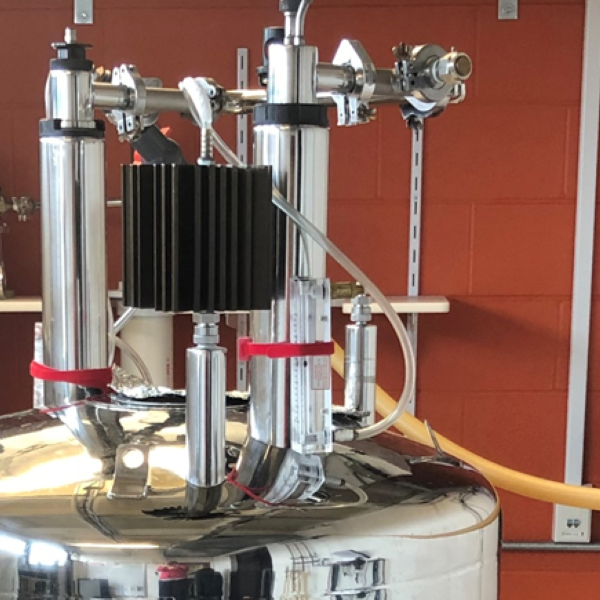Magnetic Resonance
Magnetic resonance uses very strong magnetic fields and radio waves to probe matter. The properties of nuclear spins and electron spins are exquisitely suited to reveal high-resolution structural detail, and probe molecular motion and kinetics ranging over more than 15 orders of magnitude (picoseconds to hours). Magnetic resonance is exploited for chemical characterization in a range of organic systems, inorganic materials, and in biological arenas. NMR (nuclear magnetic resonance) is a particular focus within the department, with electron spin resonance (EPR) playing a role in important role to improve the sensitivity and performance of combined NMR-EPR experiments.
Areas of Focus
Dynamic nuclear polarization (DNP) • Solid-state NMR • Custom instrumentation • Optically-pumped NMR (OPNMR) • Materials science • In-cell NMR
Affiliated Faculty
Sophia Hayes
Optically-pumped NMR, solid-state NMR of semiconductors, thin films, CO2-capture materials, catalysts, minerals and geochemical systems. NMR tensor computations for data-enabled science
Yusuke Okuno
Biophysical Chemistry, Solution-state NMR, Protein-ligand/protein-protein interactions, Protein hydration, Neurodegenerative diseases
Gary Patti
Biochemistry; Metabolism; Metabolomics; Mass Spectrometry; LC/MS; Mass Spectrometry-Based Imaging; Cancer Metabolism; Cell-Cell Interactions; Metabolic Flux Analysis; Enzyme Kinetics; Stable Isotope Tracing; Organismal Metabolism of Model Animals (Zebrafish)
Courtney Reichhardt
Biochemistry, Physical Chemistry, Solid-State NMR,Confocal Laser Scanning Microscopy, Electron Microscopy, Biofilms

see also:

My advisor and labmates at WashU are so kind and helpful. As a PhD student of chemistry, when I feel stuck in my research there is always someone I can go to. Professors here not just teach knowledge, but also inspire me with their passion and attitude toward science, that is “be true to what you like.” My time in the chemistry department shapes me to be a better and more confident researcher. I definitely enjoy my time here, and being a part of Washington University is one of the best decisions I’ve ever made.
―He SunPhD Candidate, Hayes Lab